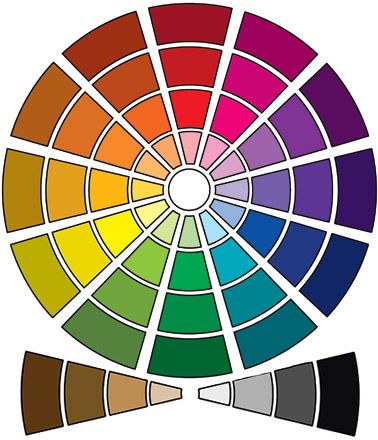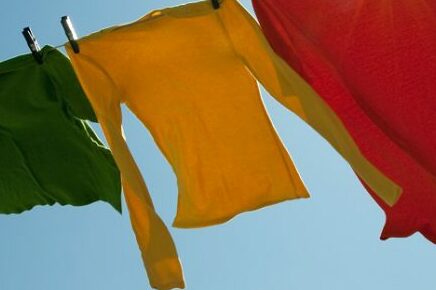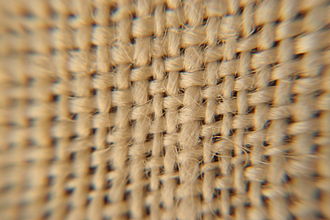
Is color the secret that creates UPF protection? Do you know what is behind the UPF color secret?
There are some things to know before you spend your clothing allowance on the favorite colors you love in an effort to protect your skin from the sun.
The fabric, the fit, and the color create the UPF protection.
Let’s first unveil the science behind UV-resistant fabrics. Yes, these fabrics play a most important part in the UV-resistant ability of your sun blocking clothing.
Like all things that sound too good to be true, color alone will not protect you from sun-related skin damage.
Paying attention to fabric may be a new step in the protection process for you but it will pay you back with protected skin. You must get your basic foundation before adding color to the process.
There are 2 biggies before moving on the fabric:
Something covering your skin, between you and the sun is always better than nothing.
Unlimited time out in the sun will cause early aging, and some skin damage, regardless of how well you protect your skin.
So, don’t allow the UV rays on your skin for long or frequent exposures.
Skin cancer is a real concern.
What Are UPF Fabrics?
UV-resistant fabrics have become an important part of our sun protection wardrobes.
As awareness of the harmful effects of ultraviolet (UV) radiation from the sun is growing; so is concern about how to keep our skin safe.
These fabrics are not just conventional materials, they are specialty ones. Engineered from the start to act as a protective barrier between your skin and the sun’s harmful rays.
So that you understand what is special about these fabrics, let’s talk a bit about what sets UV-resistant fabrics apart from regular fabrics.
Also, it is important to understand how they effectively shield your skin from the sun’s UV radiation.

What Makes UPF Special
The fiber selection process lies at the very foundation of UV protection. So this is a good place to start when talking about fabric choice.
When manufacturing UV-resistant fabrics, the selection of appropriate fibers is the starting place.
So, what is the appropriate fiber to use to end up with UV-resistant fabric? In my mind, the word fiber can be changed to thread, like sewing thread. I love to sew on the sewing machine and fiber is like sewing thread.
Regular fabrics may contain various types of fibers. (Now we see more cotton polyester blends because they are easier to care for.)
UV-resistant fabrics are primarily composed of synthetic fibers such as polyester and nylon. These synthetic fibers are great for providing effective UV protection for several reasons.
Let’s consider some of the processes that give us UV protection.
UV Producing Results
- Tight Structure: Synthetic thread can be manufactured with a tight molecular structure, leaving less space for UV rays to penetrate. This compact structure acts as the first line of defense against UV radiation.
- How Dye is used: UV-resistant fabrics may also have UV-absorbing dyes integrated into the fiber during production. These dyes can further improve the fabric’s ability to block UV rays from your skin.
The dye is where the color comes into play at the manufacturing level of producing fabric for UPF clothing.
Normal fabrics will do a great job of protecting your skin from the sun too. That is why I am breaking all this down to explain, you don’t have to have the specially made fabric to have a sun blocking fabric.
You must learn to read labels and pay attention to the information there.
You can shop in your closet and find garments to keep you and your family safe from the sun.
However, if a fabric is rated UPF with a label or hangtag, it has been treated to add extra strength to the protection.
This is how you scam-proof your purchases online for UPF clothing or when you see something you like at a store that has imported clothing. Like the souvenir shop on the beach. A fake hang tag my state UPF rates that are not actually there.
If you look at fabric content, you will know a bit more about the ability of the fabric to really be sun blocking clothing.

Fabric Weave
The results of fatter natural fibers in a weave. The weave is too loose to block out the sun. The fibers must be pushed tightly together, with no gaps or holes.
How is the fabric Construction? Are the fibers woven tight and smooth? Are they soft and loopy? Is there a knitted weave? How thick is the fabric?
Can you see through the garment?
The construction of UV-resistant fabrics involves weaving techniques that maximize sun protection.
Unlike regular fabrics, where weave patterns vary for aesthetics and comfort, UV-resistant fabrics prioritize tight weaves.
Here’s how fabric construction makes a difference:
- Tight Weave: UV-resistant fabrics typically feature a tighter weave, meaning the individual threads are woven closely together. This minimizes the gaps or what is known as pin-holes through which UV rays can penetrate. A tighter weave gives better sun protection.
- Specialty Weaves: Some UV-resistant fabrics use specialty weaves like twill or ripstop to provide their protective qualities. These weaves are carefully designed to create an even denser barrier against UV radiation.
- Double Layer Construction: Some fabrics are simply a double layer or even a laminate with a UV-blocking layer on the inside. This construction style offers added protection without compromising comfort.
Being able to come up with more comfortable fabrics is the main reason for spending extra on UPF clothing. Otherwise, use what is in your closet, or get in the house, out of the direct sun.
A lightweight fabric with some UPF factor applied or woven in will be easier to wear in the summertime than a long-sleeve denim shirt.
Then there is an additive that you can add to the laundry cycle that can add to the protection in your garments from your closet of normal clothing.
Fabric Tags and Hang Tags
When you are shopping with a retailer you are familiar with, you can probably be assured that if the hang tag on the garment says UPF 30 the rating is accurate.
Often the tags will claim a UPF 50. Again if this is from a reputable retailer, the claim is probably true. A rating of 50 means that the sun’s UV rays are 98% blocked. This is the highest legitement rating at this time.
That means that only 2% of the UV rays will get through to your skin. This is as protected as you can be. Now, how do you feel about getting a little UV rays? Think about the 98% that you are protected from.
Will 2% of the sun’s rays damage your skin? No, not a lot, at least where your skin is covered.
Even at 2%, you will eventually see sun damage and early aging. Hopefully, by the time the damage shows up, you will have matured enough to not spend so long in the sun every day. Day after day!
The real danger? The damage people usually wind up with on the parts of their skin not covered in the UPF 50 clothing. Sun blocking hats are forgotten.. UVray-blocking sunglasses are not always worn. Gloves are ignored. Long pants are traded for short pants. Feet are not protected.
People who are exposed to the sun all day every day during their work hours can expect to have sun-damaged skin. As the ozone layer is disappearing, the damage is occurring earlier in life.
These same people, me and you, are slow to cut back to a healthier time in the sun. I started with skin cancer in my early 20s. Learning my lessons slowly, I have had many episodes of skin cancer removed.
My odds of a diagnosis that will result in skin cancer increase with each exposure. Where are you with your skin damage?
Fabric Label
Let’s not forget the fabric content on our UPF Clothing. Natural cotton, if not bleached is better than bleached cotton fibers. However, to get a white, not the tan color of natural cotton, bleaching is required. This weakens the fibers and makes it difficult to weave tight enough to block a lot of sun.
So, look for blends, like poly and cotton to get better sun protection. Most fabrics are blends because of ease of care.
100% synthetic fabric will be a good choice if the fabric is tightly woven. However, many 100% synthetic fabrics are often used in novelty weaves, often making them less protective.
When you are buying plain tee shirts, a blend will protect you better than 100% cotton. It will also be easy to wear. A deep color will offer more UV protection than a white or pale color. Color makes more difference in normal clothing than in UPF clothing.
However, in the direct sun time of year, or if you are especially sun sensitive, a deep color and a UPF fabric would be the better choice.
At all times, clothing is always a better choice, even a white often washed tee shirt is better than allowing the sun to shine on bare skin.
Fabric, color, sunscreen, and limiting time in the direct sun are the better choices for healthy skin throughout your life.
The Fit of UPF Clothing
The fit of clothing is important in the UPF protection factors.
when the fabric stretches around your body, you are not protected from the UPF rays.
Loose-fitting clothing is important in the picture for complete skin protection. Clothing needs to fit properly. A shirt that falls away from the neck because it is too big, exposes unprotected skin.
When a shirt stretches across the torso the skin is exposing unprotected skin to the UV rays.
Check the labels for protection when wet. Most fabric loses its ability to protect your skin when wet. Stay in the shade and allow your wet garments to dry whether water or sweat. Dry fabric protects better.
As awareness for sun safety becomes a part of your life, you can do a better job of protecting your skin.

Sami’s Take On “Is Color the secret that creates UPF protection”
Color can make a difference in how well your clothing protects you from the sun’s UV rays. However, the fabric is the most important part of the equation.
Dye in a fabric can make the fabric thicker. The tighter weave of the cloth prevents pin holes for the sun to shine through. Synthetic fabrics have the ability to shield our bodies from the sun.
Specialty UPF clothing uses the basics of sun blocking to keep your skin safe. Comfort and style are the parts of sun blocking clothing’s difference that converted me from regular clothing.
Getting the coverage from a lightweight loosely fitting shirt with long sleeves is better than a long-sleeved denim shirt.
Just to be straightforward here, the thinner shirt will probably still be hot when you are out in the sun during the most direct sun part of the day.
However, if you are wearing a thinner regular fabric shirt, you will be getting enough sun through the weave to get skin damage.
Staying out of the direct sun during the hotter times of the day is the better way to protect your skin. Reguardless of how dark your skin tones are, the sun will damage your skin. This will cause early aging and up your risk of skin cancer.
Please use common sense and some caution for sun exposure.
Thank you,
Sami